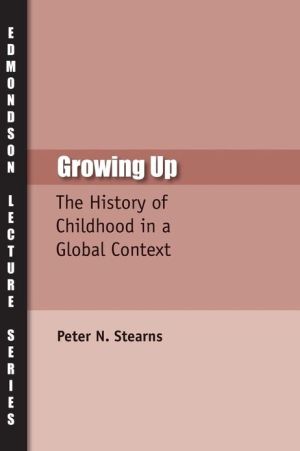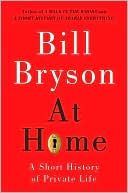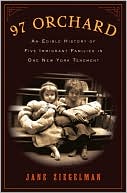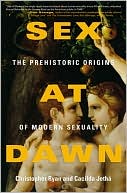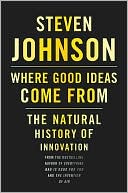Growing Up: The History of Childhood in a Global Context
In these lectures, Peter N. Stearns combines two flourishing historical fields-the history of childhood and world history-to address the question of how much of childhood is natural and how much is historically determined. The first lecture gauges the impact of impact of the development of agriculture, civilization, and religion upon the pre-modern experience of childhood. The second lecture turns to how modern perspectives on childhood contrasted with traditional ones, and how and why a...
Search in google:
Growing Up combines two flourishing historical fields the history of childhood and world history to address the question of how much of childhood is natural and how much is historically determined. The first lecture gauges the impact of the development of agriculture, civilization, and religion upon the premodern experience of childhood. The second lecture contrasts modern perspectives on childhood with more traditional ones before investigating how and why modern perspectives developed and spread. These lectures clearly demonstrate that the transformation of childhood is both recent and sweeping.
Growing Up \ The History of Childhood in a Global Context \ \ By Peter N. Stearns \ Baylor University Press \ Copyright © 2005 Baylor University Press\ All right reserved.\ ISBN: 978-1-932792-28-7 \ \ \ \ \ Chapter One \ Lecture 1\ Childhood in Agricultural Societies\ The Emergence and Elaboration of a Powerful Model\ Childhood in world history requires a general introduction, but there is risk of too much abstraction early on: so first, a few vignettes, all drawn at least in part from childhood in the agricultural period of the human experience, which is the specific topic of this first paper.\ One of Muhammad's important emphases, as founder of Islam, was his prohibition against female infanticide. This leads to several major questions. Why are some agricultural societies more willing than others to use infanticide as an ex post facto form of birth control? Where does infanticide fit into a picture of adult attitudes toward children? Did Islam promote significant changes more generally in the approach toward children and childhood?\ When Europeans with families began to arrive in North America, one of their practices that appalled native Americans was the use of physical discipline against children. The seventeenth century happened to be one of the tougher periods in the history of Western discipline, but it is also true that Western attitudes have often promoted a relationship between adults and children that has seemed strange to other societies. (A recent manifestation is the distaste expressed by most urban African consumers at the idea of putting infants in strollers, as opposed to keeping them physically close to mothers.)\ We react with shock, even outrage, at the role of child soldiers in some of the current civil strife in Africa and parts of Southeast Asia-areas of the world that are still heavily agricultural. There are indeed important new features in this phenomenon. One involves the guns themselves: children have never had such access to murderous weaponry as they have gained, in many parts of the world, during the later twentieth century. But another novelty is less expected: the fact that we are so appalled at the very idea of children serving in armies. Large numbers of the participants in the armies of the American revolution (Americans, but also Hessians brought in by the British), were fourteen- and fifteen-year olds, and there were even soldiers as young as eight. Many Roman boys rushed to the army because it was preferable to agricultural labor and parental direction. Service in the military was a common outlet for young people in premodern societies, and obviously it has remained so-what's odd, historically, is that so many of us have decided that this traditional practice is a violation of what childhood should be. Clearly, as I hope all these examples suggest, we need more historical understanding of childhood, and on a fairly wide geographical and chronological scale.\ Attempting to outline a world history of childhood is, obviously, an ambitious undertaking. Difficulties and limitations are considerable, and we must turn to these in further detail in a moment. I venture a sketch for two reasons. First, from a world history standpoint, it is important to branch out into this kind of history. World history is a rich field with a host of important discoveries to its credit. Recent research within a world history framework has added to our knowledge of environmental and biological developments, of migration patterns, and of relationships among major societies with particular attention to the economic vitality of East Asia. Yet a world history context has been only fitfully applied to some of the more private or personal aspects of the human experience, with the result that the field can often seem dominated by anonymous forces-trade relations still constitute the most systematic world history focus-without clear applicability to the ways most people actually experience their lives. Dealing with the history of childhood through attention to world history emphases, including comparative analysis, allows us to explore additional implications in the field, utilizing but not simply repeating existing world history markers that include of course basic chronology or periodization. The intent is both to illustrate and to contribute to the world history approach.\ The second spur to this sketch focuses on childhood. Research on the history of childhood, which receded during the 1980s for several reasons, is now reviving strongly, a welcome development. Childhood is one of the fundamental phenomena in human societies, and knowing more about its historical development will enhance our understanding of the past and of the forces that have led to present conditions and problems. Much research, quite properly, focuses on particular societies and time periods to discover the context for what is in many respects a highly varied and complex experience. Yet it is important, at the same time, to have a sense of the big picture-and world history is now sometimes termed, aptly enough, "big history." The world history context forces attention to defining the major changes and continuities in a phenomenon like childhood-which should in turn help shape and define any more particular study. It also requires awareness of commonalities and differences among major societies, in a field that has too often been viewed through a strictly West European and North American lens. This comparative sense produces findings in its own right, as well as guidelines that again should properly inform more narrowly constructed projects lest they make erroneous claims about distinctiveness or peculiarity. The intent, for this second goal of the sketch, is to contribute directly to our understanding of childhood as a phenomenon and process through time.\ A brief word about difficulties. Childhood is a harder subject than most to write about historically, because children leave relatively few direct records. In this presentation I emphasize childhood-the societal concept shaped heavily by adults-rather than children in part to acknowledge this difficulty, though I intend to deal with children too. We can discuss opinions concerning child discipline that are held by adults during different historical periods; but, to take one important example, we know much less about how children experienced such discipline. More broadly, we can learn much about historical childhood, through use of recollections, statistical evidence, material artifacts and folklore; but there are, inevitably, certain issues that cannot be definitively probed. A second problem, directly relevant to world history (though one which the world history approach can help address) involves the unevenness of historical work on childhood. There is a rich literature on childhood in the West, despite ample room for further research. We're beginning to get really interesting studies of childhood's history in other regions, such as Latin America; but balance has yet to be achieved, and this poses a further challenge to generalization.\ A third problem, even for the Western history of childhood, involves what turns out to have been a false start of three decades ago. The history of childhood was introduced by a masterful French scholar, Philippe Ariès. Ariès argued that premodern Western society lacked a concept of childhood, tending to view children as small adults with no special emotional or legal allowances. His approach was amplified, and sometimes partially misinterpreted, by scholars who noted some of the apparently appalling features of premodern childhood: the high death rates, for example; the frequently harsh discipline; the involvement of relatively young children in work, and sometimes very demanding or sternly regulated work; and other patterns, such as the tendency to reuse the name of a dead child for a newborn, which seemed to suggest a cavalier approach both to infant death and to children's individuality. All this added up, in the view of some pioneer scholars such as Lloyd deMause, to a truly tortured past for children. The twentieth century, in this view, emerged as the first time in which childhood was conceived with any real decency. Or, as another historian argues, premodern families' treatment of children suggested no more positive emotion than one would expect to find in the way a bird treats its young. This schema, suggesting progress only with modernity, interestingly coincided with other proclamations of triumphant contemporary gains, as in the hailing, in 1903, of the twentieth century as the "century of the child." But the whole argument spurred an almost immediate revisionist response by scholars immersed in the glories of the Middle Ages or early modern period, who argued that children in the past were loved and treated kindly, that there is no real history of quality parenting (a concept they considered a human constant), and that the whole initial justification for historical study of childhood was fatally flawed. The debate, fairly predictably, had two related results. First, this much controversy about basic issues discouraged many scholars, and research on the history of childhood slowed. Second, if the revisionists were correct, there was no significant change in the personal aspects of childhood over time, which meant that historians could better devote their energies to other topics.\ This controversy is now past, and the scholarly taps have been turned on again. Historians are contributing important studies concerning the material culture of children, with a focus on toys and artifacts: there's an exciting new body of work on the emergence of children as consumers and as objects of adult consumption. Changing parental anxieties and shifting images of children, including the emergence of the "cute child" and the development of new prescriptions for children's emotions, have generated another body of work. There's considerable attention to poor children in industrial cities, including street activities and children's cohesion around jobs such as newspaper hawking. Orphans and the phenomenon of adoption have stimulated some really imaginative research. While much of the work continues to center on the West, other societies begin to figure in as well. Latin American studies reflect the challenging juxtaposition of some standard Western assumptions about childhood, held by officialdom and the respectable classes, with very high rates of illegitimate birth and the resultant family arrangements that provide often impressive caregiving for children-a specific, child-focused example of the larger civilizational distinctiveness of Latin America in world history. And, as the following comments will suggest, we're also learning more about childhood in Islam, in Russia, and in East Asia.\ It remains true that a disproportionate amount of this new research concentrates on relatively modern developments. In one sense, this is welcome. We are learning a great deal about the emergence of recent patterns that shape and explain childhood today in ways that can actually further an intelligent discussion of issues in policy, in parenting, and in other venues such as schooling and entertainment, through the mode of what is coming to be called behavioral history-the kind of history deliberately focused on using past change, and the causes of past change, to improve contemporary understanding. We can thus tap history to grasp new behaviors on the part of grandparents; to trace and explain the shift, in the adoption arena, to a desire to identify rather than conceal biological parents; to probe why fears of abduction run so high in the contemporary United States; to account for grade inflation; to trace how children's often envious zeal for material goods turned from a moral problem to a positively desirable trait; and to provide context for the emergence of newly identified phenomena such as Attention Deficit Disorder or the Sudden Infant Death Syndrome. Of course, not all of the growing band of historians of children are so bent on contemporary explanation, but the interest in probing some of the undeniably huge changes associated with the emergence and evolution of modern childhood motivates a great deal of work, and properly so.\ This modernist clustering leaves a problem for the treatment of children in world history, quite apart from the disproportionately Western or United States targeting of much of the recent research. The primary focus of world-historical work and the areas of greatest contribution involve agricultural societies and periods of change before the modern era. I don't mean to downplay important considerations that apply to the age of industrialization and imperialism, but I think most world historians would agree that their picture of the long nineteenth century is not dramatically different from pre-world history versions-except to insist on the importance of looking at reactions to imperialism from the standpoints of the societies involved, and not just imperial policies and rivalries. World historians add more to our picture of the twentieth century with greater emphasis, for example, on decolonization; and growing attention to contextualizing and exploring globalization from a historical perspective adds to the contributions, as I will discuss in the second paper. Nevertheless, the time periods when world history really shines are the postclassical 600 C.E. to 1450 C.E., running from the fall of the great classical empires to the rise and fall of the crucial Mongol interlude; and then the early modern centuries: both periods of significant change but operating well before the kinds of modern developments that have commanded the bulk of attention from the historians of childhood. The early modern period, from 1450 or so to the later eighteenth century, does admittedly depart from the strictest contours of the agricultural economy, with growing global emphasis on commercialization; but it remains nevertheless preindustrial.\ So we have a real issue concerning connections between world history and childhood history, and it's the exploration of this issue, inevitably a bit speculative given the current state of research, that provides the subject for this first presentation. World historians have done splendid things with the periods in question (not to ignore some contributions as well to earlier eras): they've traced the surprisingly rich array of contacts among societies in Afro-Eurasia during the postclassical period; they've used the previously unduly ignored accounts of Muslim and Chinese travelers, as well as those of the more familiar Europeans; they've shown the impressive vitality of the South and particularly East Asian economies during the early modern centuries, too often oversimplified in terms of the rise of the West; they've reevaluated the significance of the Mongol period and the ensuing Chinese trade voyages of the fifteenth century; and the list could be expanded. But never, to my knowledge, in all of this have any of the world historians ever mentioned childhood and children-any more than have historians of childhood referred to the larger world history picture in the premodern centuries. So how can we begin to explore some fruitful linkages?\ The most obvious step involves getting a fix on some of the key patterns of childhood in agricultural societies generally, and this in turn involves a two phase argument. Phase one features some discussion of the implications for childhood of the transition from a hunting and gathering economy to agriculture; and phase two features some generalizations about agricultural society itself, again where children were concerned.\ We've already noted that one of the terms sometimes applied to world history is "big history"-a focus on the really huge adjustments in the human experience-admitting that finer tuning, with more detailed attention to particular societies in particular centuries or even decades, may be highly useful but that the larger context should be established first. If we were really doing a full big history of childhood, for which I am far from adequately knowledgeable, we could linger on some of the landmarks of primate evolution. At what point, to take one crucial instance, did humans begin to differ from other primates in the relationship between weaning and dentition? While young great apes develop adult teeth very soon after weaning, with humans the process occurs years later (admitting that weaning is itself a social variable). This means in turn that whereas great apes are, in terms of food-gathering capabilities, effectively adults after weaning though doubtless with much still to learn, humans are dependent on adult care for a far longer period. Big history might also account for the differences in sexuality between humans and other primates, whereby instead of particular seasons of sexual receptivity, or heat, humans are more consistently arousable-a huge factor when it comes to the regulation of youth sexual behavior. Doubtless other evolutionary phases deserve attention when it comes to the full history of human childhood. But most world historians do not pretend to carry their story back so far, and there is no reason to hinge the world history-childhood history relationship on this extension.\ (Continues...)\ \ \ \ \ Excerpted from Growing Up by Peter N. Stearns Copyright © 2005 by Baylor University Press. Excerpted by permission.\ All rights reserved. No part of this excerpt may be reproduced or reprinted without permission in writing from the publisher.\ Excerpts are provided by Dial-A-Book Inc. solely for the personal use of visitors to this web site. \ \
